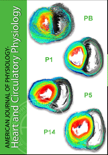
AMERICAN JOURNAL OF PHYSIOLOGY-HEART AND CIRCULATORY PHYSIOLOGY
Scope & Guideline
Transforming cardiovascular research into clinical practice.
Introduction
Aims and Scopes
- Cardiovascular Physiology and Pathophysiology:
The journal features research that elucidates the mechanisms of cardiovascular function and dysfunction, including studies on heart failure, hypertension, and vascular diseases. - Exercise Physiology:
A significant focus is placed on the effects of physical activity on cardiovascular health, exploring how exercise influences cardiac function, vascular health, and overall physiological adaptations. - Sex Differences in Cardiovascular Health:
Research examining the role of biological sex in cardiovascular physiology and disease is prominent, highlighting the importance of considering sex as a variable in cardiovascular studies. - Innovative Methodologies:
The journal publishes studies utilizing cutting-edge techniques, including advanced imaging, computational modeling, and novel experimental approaches to investigate cardiovascular mechanisms. - Impact of Environmental Factors:
Research investigating how environmental stressors such as air pollution, dietary components, and lifestyle choices affect cardiovascular health is a consistent theme. - Translational Research:
The journal emphasizes studies that bridge basic cardiovascular research with clinical applications, aiming to enhance the understanding and treatment of cardiovascular diseases.
Trending and Emerging
- Cardiovascular Impacts of COVID-19:
Research exploring the cardiovascular implications of COVID-19 has surged, addressing the pandemic's effects on heart health and vascular function. - Microvascular Health:
An increasing number of studies focus on the role of microcirculation and its alterations in various diseases, emphasizing its importance in overall cardiovascular health. - Role of the Gut Microbiome:
Emerging studies examine the interplay between the gut microbiome and cardiovascular health, exploring how gut health influences vascular function and disease. - Cardiac Regeneration and Repair:
There is a growing interest in regenerative medicine approaches, particularly studies investigating cellular and molecular mechanisms that promote cardiac repair following injury. - Machine Learning and Data Analytics:
The application of machine learning and advanced data analytics in cardiovascular research is on the rise, enabling more sophisticated analyses of complex cardiovascular data. - Personalized Medicine Approaches:
Research emphasizing personalized treatments based on individual patient characteristics, including genetic, environmental, and lifestyle factors, is gaining traction.
Declining or Waning
- Basic Mechanistic Studies:
There has been a noticeable decrease in purely mechanistic studies that do not connect to translational or clinical outcomes, as researchers increasingly prioritize studies with direct relevance to patient care. - Traditional Animal Models:
Research utilizing older or less sophisticated animal models may be declining in favor of more refined models that better mimic human cardiovascular conditions. - Pharmacological Studies:
The focus on pharmacological interventions alone appears to be diminishing, with a growing emphasis on lifestyle and behavioral interventions alongside pharmacotherapy. - Isolated Organ Studies:
Research focusing solely on isolated organ systems without integrating systemic physiological context is less frequently published, reflecting a trend towards more holistic approaches to cardiovascular research. - Gender-Specific Studies:
While sex differences remain important, the volume of studies focusing solely on gender-specific cardiovascular responses has seen a relative decline, possibly due to increased integration of sex as a variable across broader studies.
Similar Journals
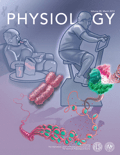
PHYSIOLOGY
Pioneering Discoveries in Physiology and BeyondPHYSIOLOGY, published by the American Physiological Society, is a leading peer-reviewed journal that has attained an impressive Q1 ranking in the field of Physiology, underscoring its significance in advancing research and knowledge dissemination. With a robust impact factor reflective of its high-quality publications, this journal serves as a critical platform for researchers and professionals to publish their innovative findings. Offering open access options, PHYSIOLOGY ensures wide accessibility to cutting-edge research that spans various aspects of physiological sciences. The journal's dedicated focus on interdisciplinary research enhances its appeal to a diverse audience, facilitating collaborations and discussions that push the boundaries of our understanding in physiology. Established in 2004 and converging toward 2024, PHYSIOLOGY stands at the forefront of scientific inquiry, making a substantial impact in the fields of biochemistry, genetics, and molecular biology.

Physiology International
Championing Excellence in Sports Medicine and RehabilitationPhysiology International is a distinguished journal dedicated to the exploration and advancement of knowledge in the fields of physiology, sports medicine, and rehabilitation. Published by AKADEMIAI KIADO ZRT in Hungary, this open-access journal has been a reliable source of scholarly articles since its inception in 2016, providing valuable insights into both complementary and alternative medicine, as well as traditional medical practices. With an impact factor that situates it in Q2 and Q3 quartiles across related disciplines, including Physical Therapy, Sports Therapy and Rehabilitation and Orthopedics and Sports Medicine, it represents a vital resource for professionals and researchers looking to stay abreast of the latest findings and methodologies. The journal is indexed on Scopus, signifying its credibility and relevance in the medical community. As it continues to develop through 2024, Physiology International invites contributions that challenge existing paradigms and foster innovative approaches to health and wellness, making it an essential platform for advancing the conversation in medical physiology and its applications.

JOURNAL OF PHYSIOLOGY AND BIOCHEMISTRY
Exploring the Synergy of Life SciencesJOURNAL OF PHYSIOLOGY AND BIOCHEMISTRY, published by Springer in the Netherlands, serves as a pivotal platform for disseminating high-quality research within the fields of physiology, biochemistry, and related biomedical sciences. With an impressive impact factor reflected in its categorization as Q2 in Biochemistry and Q1 in Medicine (miscellaneous), this journal fosters a vibrant community of scholars dedicated to advancing knowledge and innovation. The journal’s broad scope encompasses a wide range of topics from cellular mechanisms to systemic physiology, making it relevant for both theoretical and applied sciences. Researchers and practitioners are encouraged to utilize the available Open Access options to reach a wider audience. The journal’s continuous contribution to the scientific dialogue since its inception in 1996 positions it as a key resource for professionals and students alike, facilitating the exploration of cutting-edge topics and collaborative research opportunities.

Revista de la Federacion Argentina de Cardiologia
Advancing cardiovascular knowledge for a healthier tomorrow.Revista de la Federacion Argentina de Cardiologia is a vital publication in the field of Cardiology and Cardiovascular Medicine, providing a platform for researchers and healthcare professionals to share significant findings and innovative concepts since its inception in 2012. Published by the Federacion Argentina Cardiology, this journal specifically addresses contemporary issues and advancements within cardiology, contributing to the scholarly dialogue essential for improving cardiovascular health. Despite being categorized in the Q4 quartile for 2023 and presently ranking #358 out of 387 in its field, the journal remains committed to fostering academic inquiry and disseminating valuable research for both local and global audiences. Although it is not an open-access journal, it strives to balance accessibility with rigorous academic standards, ensuring quality contributions that are critical for practitioners and students alike. The journal’s ongoing evaluation and adaptation in the ever-evolving landscape of cardiology underscore its importance in advancing cardiovascular science and practice.
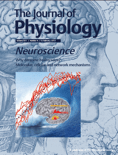
JOURNAL OF PHYSIOLOGY-LONDON
Elevating Research in Physiology Since 1878JOURNAL OF PHYSIOLOGY-LONDON, published by WILEY, stands as a prestigious beacon in the fields of Physiology and Sports Science. Established in 1878, this journal has a rich history of disseminating crucial research findings and advancing scientific knowledge, continuing its impact into the present day with an anticipated convergence in 2024. Recognized for its excellence, it ranks in the Q1 category for both Physiology and Sports Science in 2023, cementing its position within the top echelons of academic publications. With a Scopus rank of #26 out of 193 in the Biochemistry, Genetics and Molecular Biology _ Physiology category, the journal boasts an impressive 86th percentile, reflecting its high-quality contributions to the scientific community. Although not open access, its extensive archive and reputation ensure that it remains a vital resource for researchers, professionals, and students eager to stay at the forefront of physiological science. For those looking to deepen their understanding of physiological mechanisms and their applications, the JOURNAL OF PHYSIOLOGY-LONDON is an indispensable resource.

Frontiers in Cardiovascular Medicine
Connecting Global Insights for Heart Health Advancement.Frontiers in Cardiovascular Medicine is a leading open-access journal published by FRONTIERS MEDIA SA, dedicated to advancing research in the field of cardiology and cardiovascular medicine. Since its inception in 2014, the journal has become a vital platform for the dissemination of high-quality research, boasting a commendable Q2 rank in the 2023 category for Cardiology and Cardiovascular Medicine. With a focus on promoting innovative studies and clinical insights, Frontiers in Cardiovascular Medicine facilitates open access to its content, allowing researchers, healthcare professionals, and students from around the globe to engage with the latest findings which are critical for the advancement of cardiovascular health. The journal's significant presence in the academic landscape, as indicated by its Scopus ranking (161/387 and 58th percentile), underscores its importance as a research outlet in this essential field. Located in Lausanne, Switzerland, the journal continues to support the global cardiovascular community by encouraging collaboration and knowledge sharing to address the challenges faced in cardiovascular medicine today.
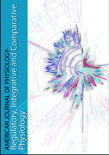
American Journal of Physiology-Regulatory, Integrative and Comparative Physiology
Advancing Knowledge in Regulatory and Integrative PhysiologyThe American Journal of Physiology-Regulatory, Integrative and Comparative Physiology, published by the American Physiological Society, serves as a premier platform for disseminating cutting-edge research in the fields of physiology, emphasizing regulatory, integrative, and comparative studies that advance our understanding of bodily functions. With an ISSN of 0363-6119 and E-ISSN of 1522-1490, this esteemed journal is recognized for its substantial impact, maintaining a 2023 Q2 ranking in both the physiology and medical physiology categories as well as commendable positions in Scopus rankings. The journal has been pivotal since its inception in 1977 and continues to foster interdisciplinary dialogue among researchers, professionals, and students alike, contributing significantly to the evolving landscape of physiological sciences. Although it operates under a traditional subscription model, its commitment to high-quality, peer-reviewed content ensures that it remains an essential resource for anyone engaged in physiological research and education.

Current Opinion in Physiology
Shaping Tomorrow’s Understanding of PhysiologyCurrent Opinion in Physiology, published by Elsevier, is a leading journal dedicated to the dynamic field of physiology. With an E-ISSN of 2468-8673, this journal provides a platform for the latest insights and perspectives, reflecting the evolving landscape of physiological research. Operating from the United Kingdom, the journal holds a respectable impact factor and is ranked Q2 in both general physiology and medical physiology categories, highlighting its prominence among the global academic community. With Scopus rankings placing it in the 64th and 60th percentiles within its respective categories, Current Opinion in Physiology serves as an essential resource for researchers, professionals, and students eager to stay informed about innovative theories and emerging trends in physiology. The publication emphasizes high-quality reviews that summarize current knowledge and future directions, ensuring readers gain valuable insights applicable in both clinical and research settings.
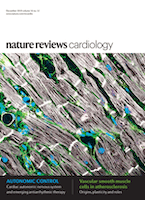
Nature Reviews Cardiology
Unveiling Insights that Shape Cardiac CareNature Reviews Cardiology, published by NATURE PORTFOLIO, stands as a premier academic journal in the field of cardiology and cardiovascular medicine, boasting an impressive impact factor and a distinguished ranking of #1 out of 387 in Scopus. Since its inception in 2009, this exemplary journal has continuously delivered cutting-edge reviews and insights, supporting researchers, healthcare professionals, and students in navigating the complex landscape of cardiovascular health. With a commitment to providing open access and disseminating rigorous research, Nature Reviews Cardiology captures the forefront of innovation and scholarship, critical for facilitating advancements in cardiovascular science and clinical practice. Situated in the United Kingdom and with a vibrant global readership, this journal perpetuates academic excellence, ensuring accessibility to the latest findings that shape prevention, diagnosis, and treatment strategies in cardiology through to 2024 and beyond.
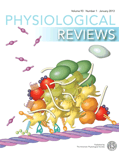
Physiological Reviews
Transforming Research into Comprehensive ReviewsPhysiological Reviews is a prestigious journal published by the American Physiological Society, dedicated to advancing our understanding of physiology across various domains. With an impressive impact factor that places it in Q1 quartiles for medicine, molecular biology, and physiology as of 2023, this journal is recognized as a leading source of high-quality reviews and research analyses. The journal has been a vital resource for the scientific community since its inception in 1945, providing in-depth and comprehensive insights that are crucial for both scholars and practitioners in the field. Although not an open-access publication, it remains widely accessible through institutional subscriptions, ensuring that crucial research findings are disseminated efficiently. With Scopus rankings that place it in the top percentile across multiple categories, Physiological Reviews continues to be an essential platform for the latest advancements and discoveries in physiology, making it indispensable for researchers, professionals, and students alike.